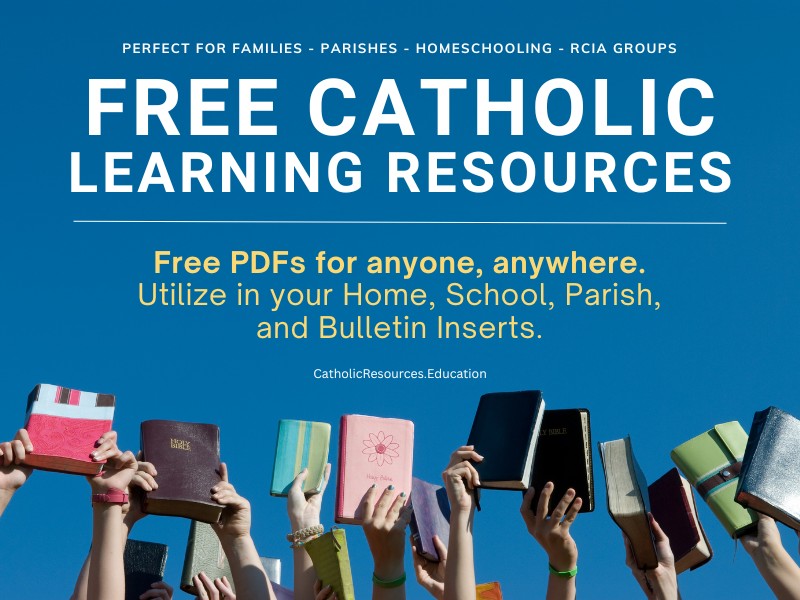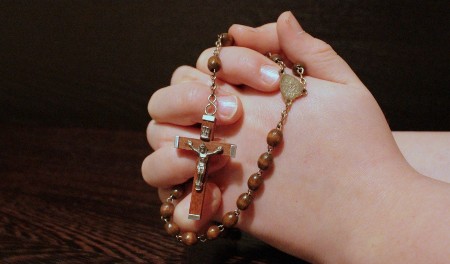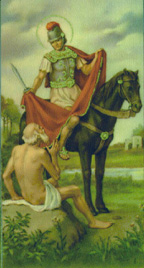 Hi readers, it seems you use Catholic Online a lot; that's great! It's a little awkward to ask, but we need your help. If you have already donated, we sincerely thank you. We're not salespeople, but we depend on donations averaging $14.76 and fewer than 1% of readers give. If you donate just $5.00, the price of your coffee, Catholic Online School could keep thriving. Thank you. Help Now >
Hi readers, it seems you use Catholic Online a lot; that's great! It's a little awkward to ask, but we need your help. If you have already donated, we sincerely thank you. We're not salespeople, but we depend on donations averaging $14.76 and fewer than 1% of readers give. If you donate just $5.00, the price of your coffee, Catholic Online School could keep thriving. Thank you. Help Now >
Trenton
FREE Catholic Classes
(T RENTONENSIS ).
Diocese created 15 July, 1881, suffragan of New York, comprises Atlantic, Burlington, Camden, Cape May, Cumberland, Gloucester, Hunterdon, Mercer, Middlesex, Monmouth, Ocean, Salem, Somerset, and Warren counties in the State of New Jersey , U.S.A. an area of about 5,756 square miles. From 1808 to 1853 the territory now occupied by the Diocese of Trenton covered the lower sections of what was then known as East and West Jersey, the former belonging to the jurisdiction of New York and the latter to Philadelphia. In 1853 the Diocese of Newark was formed, and the entire State of New Jersey was placed under Bishop James Roosevelt Bayley , afterwards Archbishop of Baltimore. The Diocese of Trenton lies between New York and Philadelphia and has within its confines all the sea coast from Sandy Hook to Cape May Point, whereon thirty churches have been built to accommodate the summer visitors to the Jersey coast. The first Mass said within its territory was celebrated at Woodbridge, about 1672, and the city of Trenton, in 1814, witnessed the formation of the first congregation and the erection of the first church.
The first bishop was the Right Rev. Michael Joseph O'Farrell (b. at Limerick, Ireland, 2 December, 1832; d. 2 April, 1894). Bishop O'Farrell completed his classics and philosophy at All Hallows College, Dublin, and went to St-Sulpice, Paris, where he made his theology course. He became a Sulpician and was ordained in his native city by the Most Rev. Dr. Ryan, 18 Aug., 1855. His superiors sent him to Montreal, Canada, where he taught dogmatic theology at the Grand Seminary. He left the Congregation of St-Sulpice and was made rector of St. Peter's Church, New York City. He took up the work of organizing the new diocese of Trenton with fifty-one priests, sixty-nine churches, and a Catholic population of about forty thousand. Soon new parishes and missions were formed, an orphan asylum was opened at New Brunswick, and a home for the aged at Beverly. At the Third Council of Baltimore Bishop O'Farrell was considered one of the most eloquentr speakers in the American hierarchy. He wrote pastoral letters on Christian marriage and Christian education. His remains were at first interred in the cathedral cemetery, Trenton, but in 1905 were transferred to a vault in the chapel of St. Michael's Orphan Asylum, Hopewell, New Jersey.
Bishop O'Farrell was succeeded by his chancellor and vicar-general, the Right Rev. James Augustine McFaul (b. near Larne, Co. Antrim, Ireland, 6 June, 1850), the second and present Bishop of Trenton. The latter went with his parents to America when a few months old. The family dwelt for several years in New York City and then moved to Bound Brook, New Jersey. Bishop McFaul made his collegiate course at St. Vincent's, Beatty, Pennsylvania, and at St. Francis Xavier's, New York City, his theological studies being made at Seton Hall, South Orange, New Jersey. He was ordained on 26 May, 1877, and, when the See of Trenton was erected, was appointed an assistant priest at St. Mary's church, Trenton, which Bishop O'Farrell selected as his cathedral. Hence he early became a friend of his predecessor, by whom he was held in great confidence and by whom he was appointed pastor of the Church of St. Mary, Star of the Sea, Long Branch. In October, 1890, he returned to the cathedral to be its rector and to assist the bishop. He was made secretary and chancellor, and on 1 November, 1892, was appointed vicar-general. On the death of Bishop O'Farrell he acted as administrator of the diocese and on 20 July, of the same year, was raised to the episcopate, being consecrated in St. Mary's Cathedral (18 Oct., 1894) by Archbishop Corrigan, from whom, when Bishop of Newark, he received all his other orders. Being familiar with the diocese he soon placed it on a splendid financial basis, and erected many churches, schools, and institutions, among which are: the orphan asylum, at Hopewell; the home for the aged, at Lawrenceville; and Mount St. Mary's College for young ladies, at Plainfield. Bishop McFaul is organizer of the American Federation of Catholic Societies, which has a membership of about two million.
Among the most widely known of Bishop McFaul's works are his pastoral letters, "The Christian Home", "The Christian School", and "Some Modern Problems", as well as a timely and valuable brochure on tuberculosis. His address on "The American Universities", delivered in New York City, June, 1909, revealed to the American people the fact that the professors of several of these institutions were advancing ideas in conflict with morality and the established standards of right and wrong. In May, 1911, he delivered an address on the Press before several thousand newspaper men, in St. Patrick's Cathedral, New York City.
In the Diocese of Trenton there are many nationalities, and the Gospel is preached in the following languages: English, German, Italian, Polish, Hungarian, Slovak, Lithuanian, and Rumanian.
The religious communities in the diocese are: men — Franciscans (Minor Conventuals ), Augustinians, Fathers of the Pious Society of Missions, Dominicans, Brothers of the Sacred Hearrt, and Brothers of the Christian Schools (summer only); women — Sisters of Mercy, Sisters of Charity, Sisters of the Third Order of St. Francis, Sisters of St. Francis, Mission Helpers of trhe Sacred Heart, Dominican Sisters of the Perpetual Rosary, Sisters of St. Dominic , Gray Nuns, Poor Clares, Felician Sisters, School Sisters of Notre-Dame, Franciscan Sisters of Christian Charity, Pious Teachers ( Pii Filippini ), Sisters of the Precious Blood.
General statistics (1911): bishop, 1; secular priests, 167; regular, 23; churches with resident priests, 124; missions with churches, 30; stations, 84; chapels, 13; religious women (including novices and postulants ), 372; college (Franciscan) 1, students, 90; academies for young ladies, 5, pupils, 350; college for young ladies, 1, students, 87; parishes with parochial schools, 44, pupils, 12,263; Sunday-schools, 153; teachers, 900, pupils, 20,364; orphan asylums, 2, orphans, 313; total number of young people under Catholic care, 13,103: hospitals, 3, patients treated during 1910, about 7,000; day-nurseries 2, children, 125; homes for aged, 2, inmates, 100; Catholic population, about 130,000.
Join the Movement
When you sign up below, you don't just join an email list - you're joining an entire movement for Free world class Catholic education.
-

-
Mysteries of the Rosary
-
St. Faustina Kowalska
-
Litany of the Blessed Virgin Mary
-
Saint of the Day for Wednesday, Oct 4th, 2023
-
Popular Saints
-
St. Francis of Assisi
-
Bible
-
Female / Women Saints
-
7 Morning Prayers you need to get your day started with God
-
Litany of the Blessed Virgin Mary
The Power of the Rosary: Why Praying the Rosary Matters for Catholics
-

Lasers Reveal Hidden Mayan City of Valeriana with 6,500 Structures in Mexico
-

Embracing Peace and Unity in a Time of Division
-
The 'Black Legend': Historian Argues Anti-Catholic Bias in Spanish Conquest Narratives
-
This Catholic Hero Who Fought Against Communism Should Be Released Immediately
Daily Catholic
 Daily Readings for Monday, November 11, 2024
Daily Readings for Monday, November 11, 2024 St. Martin of Tours: Saint of the Day for Monday, November 11, 2024
St. Martin of Tours: Saint of the Day for Monday, November 11, 2024 Prayer for Deceased Veterans: Prayer of the Day for Monday, November 11, 2024
Prayer for Deceased Veterans: Prayer of the Day for Monday, November 11, 2024- Daily Readings for Sunday, November 10, 2024
- St. Leo the Great: Saint of the Day for Sunday, November 10, 2024
- Evening Prayers: Prayer of the Day for Saturday, November 09, 2024
![]()
Copyright 2024 Catholic Online. All materials contained on this site, whether written, audible or visual are the exclusive property of Catholic Online and are protected under U.S. and International copyright laws, © Copyright 2024 Catholic Online. Any unauthorized use, without prior written consent of Catholic Online is strictly forbidden and prohibited.
Catholic Online is a Project of Your Catholic Voice Foundation, a Not-for-Profit Corporation. Your Catholic Voice Foundation has been granted a recognition of tax exemption under Section 501(c)(3) of the Internal Revenue Code. Federal Tax Identification Number: 81-0596847. Your gift is tax-deductible as allowed by law.







 Daily Readings for Monday, November 11, 2024
Daily Readings for Monday, November 11, 2024 St. Martin of Tours: Saint of the Day for Monday, November 11, 2024
St. Martin of Tours: Saint of the Day for Monday, November 11, 2024 Prayer for Deceased Veterans: Prayer of the Day for Monday, November 11, 2024
Prayer for Deceased Veterans: Prayer of the Day for Monday, November 11, 2024

